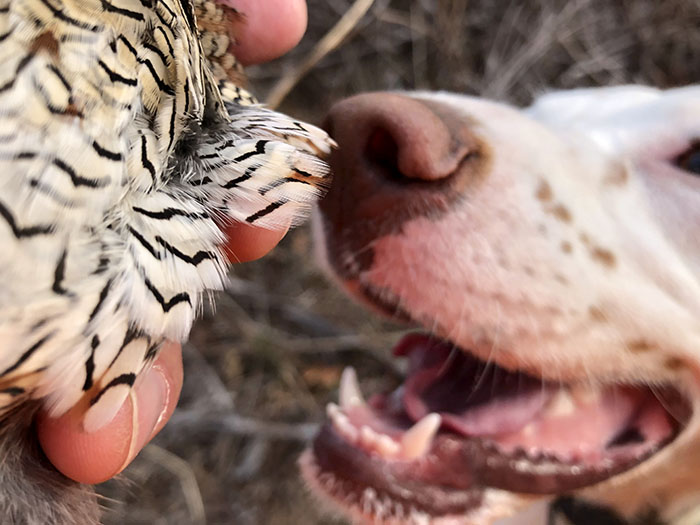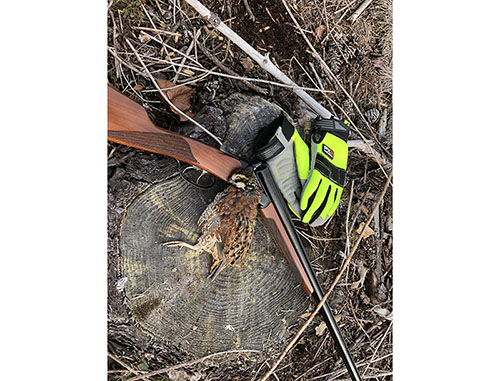
Some might say the southern piedmont of Virginia looks scalded, worn out, degraded and beat up. There are few magazine cover vistas here…unless you are willing to do more looking than through a car window on a drive by. Cutovers covered in poke weed and broom straw, ridges blanketed in planted pines, or fescue pastures holding angus cattle dominate the scenery. But the land of red clay and smoke blackened tobacco barns is rich with history and stories dating back hundreds of years. And subtle beauty abounds. A friend of mine called this place the land of milk and honey, referencing the Holy lands.
When I first moved here, I thought that was his idea of a sarcastic joke. Twenty-eight years into living here, and twenty years into owning a meager slice of it, it’s become the land in my heart. Cedar Creek bisects our land, headwaters of the Chesapeake Bay drainage. It was one thing that sold me on buying these forty-two acres. It is spring fed, never dropping too low, staying cold all summer, and never freezing over in winter. Loaded with minnows, may flies and crawdads, it made a perfect playground for my daughter and her friends. At the eastern edge of our stretch of it is an understated, but beautiful waterfall…more of a slide really, all six feet of drop giving the creek some voice after heavy rains. Six of my bird dogs are buried a few yards above it. I hope not to leave this place behind, other than by joining them.
When I first stood on this piece of ground, not able to see beyond the twenty-year-old loblolly pine trees, I had a vision for the place. I’ve spent most of my adult life helping others manage their land for wildlife. You can teach people how to do things. You can tell them what needs to be done and how to get to get it done but teaching them to see it…to have a vision for it…that’s another matter altogether. To really manage a piece of ground takes having a vision for it. And some get it, and some do not.
In my case, it took me twenty years to see the fruits of my labor. Thirty-two of our forty-two acres were in densely planted loblolly pine in need of much management to transform them into the place I saw in my mind’s eye. These pines were planted in 1983 and grandfathered into the Conservation Reserve Program in 1985. When we bought the land, I had enough knowledge of pine management to know where to start. The first thinning was done before the house was finished and completed just in time for the massive ice storm of December 2003. I recall standing on my back porch during the height of the storm, my nose filling with the scent of fresh pine sap from all the limbs that were breaking off, sounding like a small arms firefight as they did so. Nine years later we had them thinned heavier, opening the canopy, and letting in sunlight and songbirds. This time the memory is of my seven-year-old daughter crying on our back porch screaming “daddy, they are killing all the trees.” But after a week or two and my explaining of how we were just transitioning from one habitat type to another, she came to get a kick out of watching the logger’s work. I have a keen respect for loggers.
With the second thinning, the transformation began to take place. There were patches within the pines where enough sunlight poured in to fuel the growth of herbaceous plants and shrubby cover. The songbirds showed up in abundance, perching and leaving the scarified seeds from their soft-mast droppings behind; setting the stage for what would come after the final harvest. They provided me a free source of poke weed, ragweed, beggar weed, and partridge pea seed, banked in the soil for a withdrawal by the sun and rain just weeks after the timber was clearcut. People fret and worry, land does not. Land is resilient. Nature is resilient. Both have time on their side. Short of nuclear attack – all is never lost.
I must admit a new timber clearcut is a landscape only a forester, or a habitat manager can love. For the uninitiated, it appears that a forest was slaughtered for naught. But for those of us who love quail and rabbits and bees – a clearcut is a chance at rebirth. Like most things, a cut should be done well, when the ground supports the equipment, leaving creek drainages protected, with care taken not to damage the slopes, and with erosion control measures taken where needed. The good land manager takes steps to nurse the land. I planted cheap but effective cover crops like buckwheat and millet before the loggers had even finished. And I thought a lot about the next steps.
I decided to leave my cut-over fallow for over a year before preparing to plant it back to trees. In my way of thinking, this would allow an entire years’ worth of herbaceous plants to grow, mature and deposit more seeds into the seedbank. If I could harvest all the seeds those plants produced, I wonder how many pounds there would be and what they’d cost on the fair market? While I watched my clearcut grow nature’s crop, I pondered what trees to plant back. And I began to hear my first quail whistles…yes, they found my place on their own. Maybe they would be only transients…time would tell. I also took time to enjoy the view that opening the forest had provided us. I could now see mountains off in the distance and see how the piedmont was much less flat than many think.
I decided over the long term I wanted a mixed short-leaf pine, loblolly pine and hardwood forest on my land. The loblolly and hardwoods I’d get for free, the short-leaf I bought from Department of Forestry. The herbicides needed for site preparation to ensure success were intense. But I had faith that I had enough capital in my seedbank for a good recovery. I identified several areas where chinquapins grew and flagged those to avoid herbicides. Likewise, I protected areas of my streamside management zones (SMZs) from spraying. My vision began to take shape. I applied for an NRCS cost incentives program, and with help from their staff, received approval for several aspects of my project.
The winter after the spraying was complete and my pines had been planted, I began doing timber stand improvement work on my SMZs. Since I would have plenty of pines in other places, I selectively removed all young pines from my SMZs, focusing on growing a stock of poplar and maple saplings, which would soon provide good early spring pollinator habitat. These areas also quickly produced devil’s walking stick, blackberry, and greenbrier. We think of pollinators in terms of herbaceous wildflowers, but hardwood forest tree and shrub flowers play a vital role in their lives, too. I also began removing competition in my chinquapin areas and started timber stand improvement work in my hardwood bottom by select cutting and hack and squirt herbiciding. An untrained eye would never notice the work I spent days doing. But I could see things evolving. The work one person can do with a saw-head weed eater, chainsaw and hand-held sprayer is significant.
The summer of 2023 represented the fourth-year post-timber harvest, and the second growing season after herbicide application and pine planting. I was pleased with the amount and distribution of poke weed, ragweed, partridge pea and many other herbaceous plants I saw growing like flat-topped white aster, blue curls, and woodland sunflower. I also liked the small patches of bare ground I was observing, just right for quail to forage on, or native bees to nest in. But more than anything else…I had two coveys of quail I was seeing and hearing consistently. On mornings when I was down in the dumps due to family illness issues, and the loss of loved ones…sitting on my porch with coffee just before dawn…the fall covey calls gave me a rush of joy better than any from caffeine. Did I mention my new bird dog puppy was now almost a year old? It is hard to describe the fun we have already had running over this land almost daily. What a place for bird dogs. A cold creek to lie in on hot days, and skip through when the frost was on, and room to run at full tilt. And from time to time, quail, and woodcock to stumble into and not yet know what to do with.
This year I know is the best one my quail will have on my land. Having worked with, managed for, and hunted quail now for 32 years, when the cover is prime you know it. And you also know it is fleeting without continued disturbance. Walking through it now with my dog, my heart beats faster. My ancient self knows the possibilities. And we find quail, many times, but harvest none. Things just were never quite right…until recently, on a late Saturday afternoon hunt, just me and Sadie; she pointed and held, and the covey flushed, and my gun rose without thought, I shot without feeling it – it just was, and we killed the first quail ever taken on our own land (with no goal to take any more). It all happened in slow motion…time suspended…all the dogs and years and friends and places distilled into this moment. Some might measure this event in costs. How much had this quail cost me? But Sadie and I measured it in all that this quail had given us. After all it was twenty years of enjoying all the work and the effort it took to get here, all the fun we had running this land, all the times I sat and looked into the future, there were no costs, only opportunities – and this quail had given us everything we ever dreamed of.





